Flying high for conservation
By developing revolutionary drone technologies, an ambitious new network will help push wildlife conservation into the 21st century
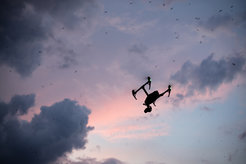
In the fight to reverse the greatest biodiversity decline in history, humans are conscripting a new ally: drones. The remote-controlled vehicles can venture into dangerous or hard-to-reach places, capturing photos, videos, and a range of other data as they fly. For conservationists, this technology could potentially provide an effective and cost-efficient tool for monitoring and preserving wildlife. But so far, that potential has fallen just short of success.
“Drones currently lack the technological maturity required for widespread use in wildlife conservation,” says Blair Costelloe, a post-doctoral fellow at the Max Planck Institute of Animal Behavior (MPI-AB). “They are often perceived as unreliable, time-consuming, and costly to use in ecological experiments and nature conservation.”
That gap is on the cusp of being closed. This year, Costelloe, MPI-AB group leader Andrea Flack, and a team of international partners won funding for an ambitious network to develop revolutionary drone technologies for wildlife conservation. The consortium, called WildDrone, will bring together expertise in the areas of aerial robotics, computer vision, and wildlife ecology. In doing so, they will develop autonomous drone technology that can provide conservationists with crucial knowledge of animal health and behavior.
The interdisciplinary WildDrone network has been granted under the Doctoral Networks Call 2021 in the Marie Skłodowska Curie Actions (MSCA-DN)—one of 144 programs to be awarded funding out of 1076 applications. WildDrone consists of partners from across Europe, Africa, and the U.S. Over the course of four years, the partners will recruit and train a total of 13 doctoral candidates, equipping them with the unique combination of multidisciplinary skills required to realize the full potential of drones and companion autonomous systems for nature conservation missions.
Removing “big bottlenecks”
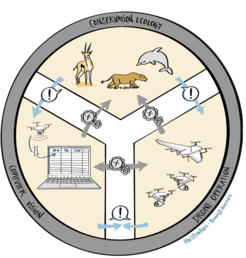
Despite recent leaps, drones still face steep challenges when deployed in real-world scenarios, especially the remote environments where wildlife often roam. Here, conditions can be unpredictable and there may be little supporting infrastructure. Further, pilots will often have to fly drones Beyond Visual Line of Sight (BVLoS) to follow animals that naturally range over huge areas.
“It’s not uncommon for drones to be waylaid by bird attacks or other unpredictable reasons,” says Costelloe. “But if the drone is out of sight, the pilot has no way to recognize the problem and prevent a crash.”
The WildDrone team will push the boundaries of drone robotics, developing systems that allow the drone to effectively adapt “on the fly to unexpected conditions,” says Costelloe. The concept is akin to self-driving cars, which can react to unpredictable traffic situations. “If the drone encounters an eagle or unexpected wind conditions, it should be able to detect the issue and then safely manage it with flexible behaviors,” she says.
The other key innovation is automation, which the WildDrone team are pursuing to eliminate the need for pilots to directly control the drone or manually analyze footage to gain ecological insights. Instead, computer vision and machine learning systems on-board the drone will detect animals and automatically adjust the flight plan to capture the necessary images. “Automation means that the drone can, in real time, recognize something of interest, and then adapt flight to follow or gain a close-up,” says Costelloe.
Data processing is another constraint in current drone projects: after flying the drones in the field, researchers often have hours of footage or terabytes of images to sift through before they can answer their scientific questions. Computer vision algorithms can automate some of these tedious tasks, such as counting animals or tracking animal movement, saving researchers time and money, and allowing them to make timely management decisions.
“Drones have a lot of potential to revolutionize wildlife management and conservation, but manual flight and time-intensive data processing are big bottlenecks that prevent us from efficiently deploying drones and making rapid and effective decisions based on drone data,” says Costelloe. “I think the projects we have outlined in WildDrone will contribute extensively to overcoming these limitations and creating practical tools for use in the field."
Reducing human-wildlife conflict
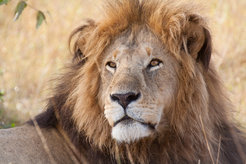
These innovations in drone robotics, computer vision, and machine learning will feed into on-the-ground conservation projects led by the consortium’s ecologists, which include Costelloe and Flack from MPI-AB.
Costelloe’s project is aimed at developing solutions to reduce human-wildlife conflict in pastoral systems. Working with the Ol Pejeta Conservancy in Kenya, the team will collaborate to help cattle herders avoid lions and other hazardous species.
The idea is to develop an inexpensive, portable drone system that can patrol the herder’s planned grazing route to look for problem species, and alert the herder to these animals and their location. In particular, Costelloe is interested in whether or not the drone could even predict the movement of the wild animals so that the herder can avoid them later in the day.
Drawing on the expertise of the MPI-AB in areas of collective behavior, animal tracking, and wildlife field studies, the WildDrone project will determine how much and what types of behavioral data are needed to effectively forecast animal movement. “Ideally, the drone could tell us not only where these animals are, but where they are likely to be in the near future,” says Costelloe.
How does human land use affect flight behavior?
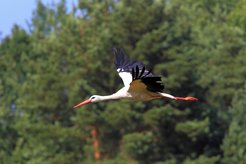
The second MPI-AB WildDrone project, led by Andrea Flack, will combine real-life 3D bird tracking with drone and computer vision technology to reenact the flight of the most iconic migrant.
White storks undertake epic annual migrations thousands of kilometers across continents. Yet their flight is heavily influenced by even the smallest fluctuations in wind conditions, which can be generated by different landscape types and features, including human-built structures.
“It has been nearly impossible to obtain reliable data on these small-scale wind patterns because the required sensors are too heavy to be carried by the birds,” says Flack, who leads the Collective Migration Group.
Flack’s WildDrone project will retrace the flight of storks with drones that are equipped with sensors to measure air conditions, as well as cameras to take photos of the landscape. This will enable to team to examine how static landscape features, including human developments, and dynamic atmospheric conditions affect the flight performance of the large soaring birds.
Says Flack: “By deploying drones to autonomously gather data on terrain, land use, and other environmental factors, this tech can revolutionize our understanding of the dynamic environments that migrants fly through.”
Innovative training
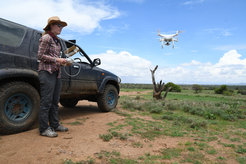
The objective of the MSCA Doctoral Networks is to implement doctoral programs by partnerships of organizations from different sectors across Europe and beyond to train highly skilled doctoral candidates, stimulate their creativity, enhance their innovation capacities, and boost their employability in the long-term. In this spirit, the WildDrone network emphasizes exchange across locations and disciplinary boundaries. Each doctoral project includes a placement with another project partner, offering students an opportunity to gain new skills and contribute to development of other projects. This includes not only exchanges to other universities, but also industry and conservation partners, so that the students gain exposure to a variety of professional sectors. Other network-wide activities include joint coursework, such as drone pilot training and courses on wildlife ecology and conservation, as well as field trips and workshops.
Says Costelloe: “The goal is to provide training at the intersection of multiple fields and professional sectors, so that the students are well-prepared to undertake innovative and impactful careers.”
Beneficiaries and self-funding partners: Max Planck Institute of Animal Behavior, University of Münster, WIPSEA, Wageningen University, Bruno Kessler Foundation, Avy, EPFL, University of Bristol, and University of Southern Denmark.
Associated partners: Ol Pejeta Conservancy, National Park Wadden Sea, British Broadcasting Corporation (BBC), Kenyatta University, University of Konstanz, Bristol Zoological Society, KBR Wyle Services, LLC, Danish Environmental Protection Agency, Kuzikus African Safaris PTY, Danish Agriculture & Food Council, and WWF Schwitzerland.
















